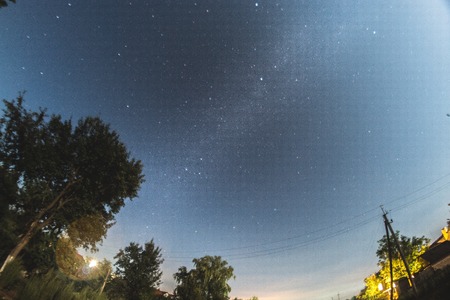The Lion’s Tea Break: Introducing Britain’s Big Cat
Forget the wild savannahs and sun-soaked Serengeti—Britain’s lions are far too civilised for all that roaring and running. Here in the UK, the mighty lion, “king of the jungle,” has settled for a far more leisurely existence: sipping lukewarm tea in a draughty pub garden and braving drizzle instead of drought. From the stone-faced guardians perched atop Trafalgar Square to those grinning felines lurking on supermarket logos, the lion has become Britain’s unofficial mascot—despite never having prowled our countryside (unless you count escaped circus acts). But how did this regal cat go from Africa’s apex predator to the soggy symbol of Britishness? And why do we insist on placing him everywhere, as if he’s just popped out for a cheeky Greggs sausage roll? To uncover the tale of the British Leo, let’s start by exploring how this noble beast swapped pride rock for Union Jack bunting—and why he seems perfectly content with a nice cuppa and a commemorative coin or two.
2. Roaring with a Stiff Upper Lip: Lion Meets British Manners
If you’ve ever wondered what happens when the king of the jungle collides with the land of polite queues and apologetic small talk, look no further than the British lion—a creature that’s mastered the art of showing absolutely no emotion, unless there’s a biscuit at stake. The typical British Leo has perfected that face: somewhere between “mildly bored” and “Is it time for tea yet?” (Spoiler: It always is.)
But how exactly do British manners impact our majestic feline friend? Well, imagine a lion trying to roar but remembering halfway through that one mustn’t make a fuss. The result? A half-hearted yawn that politely asks, “Terribly sorry, did I disturb you?” Let’s break down the classic British politeness vs. Lion Instincts in this handy table:
| British Politeness | Lion Instincts | The British Leo Result |
|---|---|---|
| Queuing patiently | Chasing gazelles | Waiting for prey to take their turn |
| Apologising for everything | Roaring dominance | “Sorry, was that too loud?” after a roar |
| A cup of tea solves all problems | Raw meat solves all problems | Sipping Earl Grey while eyeing a zebra sandwich |
| Barely-interested-in-anything expression | Proud, intimidating stare | Looking unimpressed by both tourists and antelopes alike |
The truth is, British politeness doesn’t just tame the wild—it confuses it beyond recognition. While other lions might go full Simba on the savannah, the British Leo is more likely to quietly judge your choice of teapot and question your scone etiquette. In summary, if you ever spot a lion giving you that iconic “couldn’t care less” look—don’t worry, he’s just waiting for afternoon tea.
![]()
3. The Lion in Football, Flags, and Bizarre Pub Names
If you ever fancied meeting a lion in the wilds of the British Isles, just pop into your nearest pub or glance at any football shirt. The British have an unshakeable obsession with lions: not because they roam the streets of Birmingham, but because nothing says “British spirit” quite like a beast that hasn’t actually lived here since the last Ice Age. Take football, for instance. The famous “Three Lions” crest isn’t just a logo—it’s a statement: “We may not always win, but we roar very loudly about it.” This feline pride struts across England’s World Cup kits, transforming even the most hopeless penalty miss into an act of noble suffering.
But the lion is not content with sporting glory alone. It’s everywhere: on coins, in crests, waving (awkwardly) from flags, and—most mysteriously—on every other pub sign in Britain. “The Red Lion” is such a common name that you’d think there was an ancient law requiring one on every high street. Are Brits simply nostalgic for medieval bestiaries? Or is it all a cunning ploy to attract tourists who expect their pint to come with a side of roaring wildlife?
And don’t get us started on pub names: “The Lion and Unicorn,” “The Golden Lion,” “The Sleepy Lion”—it’s as if the entire UK is running a collective big cat sanctuary disguised as places to serve warm beer. Maybe one day historians will uncover the secret society of British Leos responsible for this phenomenon. Until then, rest assured: whether you’re watching footie or stumbling home past your local Red Lion, the king of the jungle is never far from British life—even if he’s more likely to be found on a signpost than prowling through your garden.
4. Of Noble Coats and Royal Roars: Heraldry and the Lion’s Claim
If there’s one thing the British adore more than tea, it’s slapping lions onto absolutely anything that stands still for long enough. Family crest looking a bit bland? Stick a lion on it. Royal standard needs gravitas? Lion. Biscuit tin could use some class? You guessed it—lion again. This grand tradition of lionification has been roaring through the UK since medieval times, when heralds ran out of ideas and decided, “Why not just add another lion?”
The Lion: Britain’s Favourite Feline (Sorry, House Cats)
Why the obsession with lions, especially since you’re more likely to spot an angry badger in Surrey than a wild lion anywhere in Britain? Simple: Lions are big, bold, and give off an aura of instant poshness. The moment you slap a lion on something, it’s suddenly 30% more intimidating and at least 80% more likely to be considered “heritage.”
Places You’ll Find the British Lion (And Why)
| Item | Lion Placement Logic |
|---|---|
| Family Crests | Makes your ancestors look braver than they probably were. |
| Royal Standards | Because nothing says “Don’t invade” like three gold cats glaring at you. |
| Biscuit Tins | Adds regal flair to your digestive biscuits; elevates snacking experience. |
| Pub Signs | Ensures even your local watering hole feels like a palace. |
| Football Logos | Makes losing feel nobler, somehow. |
The Unwritten Rule: More Lions = More Status
If you think one lion is impressive, wait until you see three. The British believe the more lions you can cram onto your coat of arms, the higher your social standing—or at least your ability to scare off rival families at the jousting tournament (or pub quiz). It’s practically a national sport in itself.
So next time you find yourself admiring an elaborate biscuit tin or questioning why your mate’s family crest looks like a wildlife documentary gone rogue, remember: in Britain, nothing says noble heritage quite like a well-placed lion—or six.
5. The Lion’s Dilemma: Rain, Scones, and the Perpetual Queue
Picture this: a mighty lion, mane freshly fluffed, stepping out for a regal promenade—only to be greeted by the kind of drizzle that could soak through steel. Yes, welcome to Britain, where even the King of Beasts gets a bit soggy around the edges.
The Drizzle Conundrum
Ask any lion worth their salt (or should we say their Earl Grey), and they’ll tell you tropical sunshine is all well and good until you’re forced to prowl across Hyde Park in a steady mist. The British Leo has perfected the art of appearing indifferent while secretly eyeing every nearby pub for shelter. If you ever spot a slightly damp lion loitering under a bus stop, don’t worry—it’s just adapting.
The Queue Quandary
No British experience would be complete without the national sport: queuing. Our feline friend, once a fearsome hunter, now stands politely in line outside a bakery—tail twitching with anticipation, trying desperately not to roar when someone cuts in front for the last scone. Here lies the true test of Britishness: patience, politeness, and an internal monologue that could melt butter faster than a heatwave in Cornwall.
Scone Shock Syndrome
And then there’s the scone itself—delicate, crumbly, and outrageously overpriced. The British Leo approaches with trepidation: jam first or cream? (An existential crisis worthy of Shakespeare.) One careless bite and half the treat tumbles onto his majestic whiskers, leaving him pondering whether it was all worth it.
The result? A lion who is still fierce—but now also slightly befuddled, mildly damp, and eternally unsure about afternoon tea etiquette. It’s survival of the fittest with extra sugar and a dash of confusion, proving that even the most regal creatures must bow to the quirky charms of British life.
6. Conclusion: Rule Britannia, Rule the Pride
So, what have we learned from this riveting exploration of the British Leo? Well, for starters, the peculiar love affair between the UK and its symbolic lion is a cocktail of pride, eccentricity, and a dash of tongue-in-cheek bravado. The lion—once the fearsome king of distant savannahs—has been thoroughly domesticated by British culture: it now lounges atop pub signs, guards palatial gates with as much ferocity as your average housecat, and glares nobly from the nation’s coinage (sometimes looking as if it’s pondering what’s for tea).
Let’s face it, no other big cat could pull off being both a national emblem and the unofficial mascot for Sunday laziness quite like the British lion. Its mane may be windswept rather than wild, its roar occasionally replaced by an exasperated sigh at queue jumpers, but make no mistake—the Leo still rules. Not so much over the jungle, but over the high street, football crests, and anyone who’s ever wrestled with a stubborn garden hedge.
In true British style, we’ve turned the world’s laziest big cat into an icon of quiet confidence and wry self-awareness. Perhaps that’s why, centuries on, the lion remains our reigning monarch—less of a king of beasts and more of a king of banter. Long may he prowl… or at least nap in full view of Buckingham Palace.


